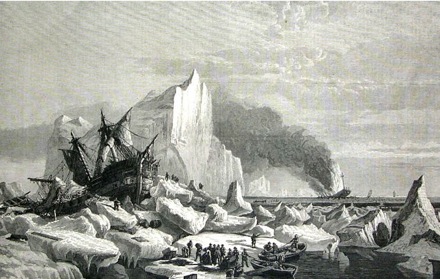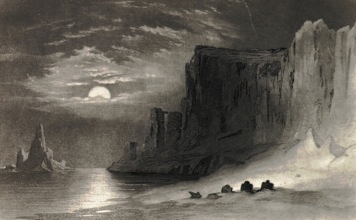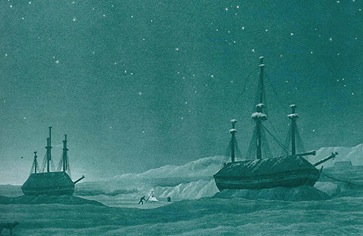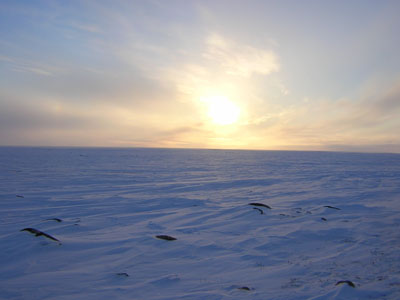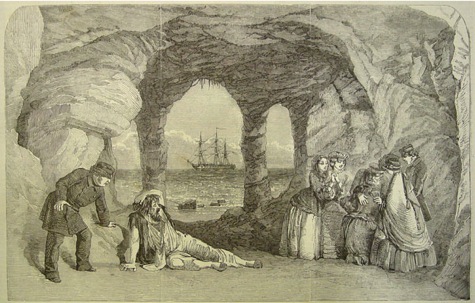
The illustrations for Arctic Spectacles
are drawn from museums around the
world, as well as from the author’s own
personal collection, and those of other
private collectors. At left is a tinted version
of William Westall’s plate from Parry’s
first voyage, showing the ships housed in
for the winter in the remoteness of
Melville Island in 1819-1820
At right is Sartain’s engraving, based on Kane’s
own sketch, of the graves of three of Franklin’s
crew on Beechey Island.
At left is an engraving from the
Illustrated London News, based
on William Bradford’s massive
canvas, Sealers Crushed by
Icebergs, which was then on
display in a London gallery.
At right is a particularly lurid
(and fanciful) depiction of the
discovery of a skeleton on an
abandoned whaleboat by Leopold
McClintock, as illustrated in
Harper’s Weekly in 1859. The
dramatic cliffs which nearly fill
the composition are in contrast to
the actual coast of King William
Island where the boat was found,
which rivals Florida for flatness.
Below is an image of the site I took
in April of 2004.
The desolation of King William
Island, where even in April
(when I was there) the daily
high temperature barely reached
20 degrees below zero, is hard
for anyone who has not been there
to imagine. From the tiny hamlet
of Gjoa Haven, you could point
your hand in any direction, and
know that not a single soul would
be found along that line for
hundreds and hundreds of miles.
The scene at right shows
Charles Dickens, dying
tragically and heroically in
the role of the ill-fated Arctic
explorer “Richard Wardour,”
in the play The Frozen Deep,
written by his protégé Wilkie
Collins, and produced and
directed by Dickens at his home,
Tavistock House, in 1857.
The play was said to be so
moving that even the carpenters
and stage-hands cried every
time.
